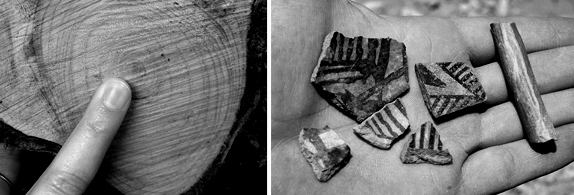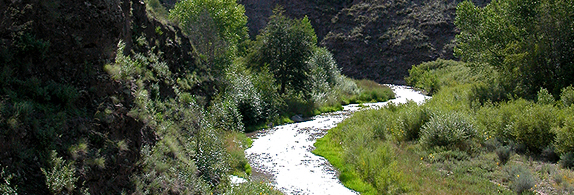Do Nothing Taxes in the Country’s Poorest State

Being poor anywhere, but particularly here in the poorest state, can come with a paralyzing sense of hopelessness. In New Mexico, the crippling gloom of poverty is made more vicious by the rational fear that government doesn’t think or care about you if you’re poor.
People without money, without financial padding or without decent work at decent pay, know only too well that trickle down economics has never worked for them, because trickle up politics always has the advantage. They see it every day. Both conservatives and centrists are more concerned that rich folk get richer than they are concerned with poor folks getting not only a fair chance to succeed, but also the public services they need when they fall on hard times. Everyone who suffers from a lack of wealth knows this through the direct impressions of hunger pangs and sometimes the life threatening stress of constant anxiety.
They know that income inequality is as real as having no food on the table. They know that most of the well-to-do in New Mexico don’t give them, or their children, a second thought. They understand the reality of out-of-state businesses coming to New Mexico to make a killing if they can, not to provide good jobs for anyone. The poor know that businesses get richer by cutting their major costs, wages and benefits, anyway they can.
They sense that the endless talk about tax reform not only serves the interests of the wealthy, but downgrades and undermines the public services and infrastructure everyone needs to operate in New Mexico.
The “good news” we’ve heard lately about lowering business taxes is bad news for New Mexico’s poor, or some 22.2 percent of our population, according to the census bureau, more than any other state. We learned recently that New Mexico has the lowest manufacturing tax rate in the West. The Tax Foundation, an anti-tax outfit that says it’s nonpartisan, touts New Mexico as having one of the the lowest property taxes in the country. We hear from the Governor in her State of the Union address how proud she is to have joined with other conservatives and centrists of both parties in reducing corporate tax rates in general last year.
But how can it be a good thing, in the poorest state in the union, to cause less money to come into our coffers from private companies and corporations who use our public services – our roads, our police and fire departments, our flood control, our schools --to help them up their profits? Isn’t that a foolish thing on the face of it? Aren’t we allowing them to exploit us on the off chance they will bring us “jobs,” the nature of which and the wages of which we know nothing about? And can’t we read the tea leaves anyway when we know that, next to Nevada, New Mexico has more people marginally attached to the workforce with low paying jobs and involuntary part time jobs than anywhere else in the country? What kinds of jobs do those low taxes bring us?
Not only do we get paltry work for our people, we give away the store to get it. And lately, we’ve given away the store without getting hardly any jobs in return. According to the Washington Post, New Mexico ranked “among the top 15 states in employment growth over the past 40 years or so.” But as recently as last November, nearly three years into the Martinez Administration, New Mexico was ranked 48th in job growth.
The Post goes on to cite the 2012 Center on Budget and Policy Priorities that the horrible truth here is that “income disparities are bigger than in any other state” between “the top and bottom” and the “top and the middle.” One way to look at it is to say that the poor, the middling, and their children are the most removed from the power elites that tend to create policy, or influence it in their favor. Income disparity puts the have-nots at a social and cultural disadvantage that only a miracle, like winning the lottery, might alter.
And what about our property taxes? Granted, the way they are structured now, property taxes are strongly regressive, hitting the poor and not-so well-to-do very hard relative to their income. But if you restructure property taxes around both income and property value, you make them more equitable. It’s all a matter of legislation. What happens when property taxes are low? In Bernalillo County, Albuquerque Public Schools, charter schools, Central New Mexico Community College, UNM Hospital, the Metro Arroyo flood control, and the Middle Rio Grande Conservancy District get less money than they need to do the jobs we need them to do. And we all suffer from a form of collective impoverishment.
New Mexico’s conservative establishment wants to send New Mexico’s scarce tax dollars out of state to education testing and evaluation corporations instead of spending it on teachers and school infrastructure. This seems totally absurd. Why would I, as a New Mexico taxpayer, want to spend any part of my taxes, small or large, filling the coffers of corporations in Arizona, Florida, or on the East Coast at the expense of local people?
Granted, nearly a quarter of the state’s revenue comes from taxes and royalties on oil and gas and carbon dioxide production. But New Mexico coddles its oil and gas producers with what amounts to massive tax breaks from capping the maximum tax for oil at $18 a barrel when the market rate three years ago, say, was upwards of $113 per barrel. New Mexico also caps maximum taxable prices for natural gas at $1.35 per 1000 cubic feet. This causes New Mexico to get far less revenue from oil and gas royalties and taxes from public lands than most other oil and gas producing states receive.
Who basically supplies most of the money to fund our state relative to their incomes? Poor and lower income people who get no tax breaks, no caps on taxable sales, and who must deal with regressive taxes, that’s who. Rich and powerful big companies make money in New Mexico by riding on the backs of low-income, high-taxed working people.
And who is leading the nationwide revolt against taxes? Those who have already slithered out of most of them.
Florence Hawley Ellis, 1906 – l991

Every once in a while the luck of the draw really does come your way. For those of us who were studying anthropology at the University of New Mexico in the late l950s and early l960s, the great Southwestern archaeologist, ethnographer and dendrochronologist Florence Hawley Ellis would give us all an example of what good fortune, and its lasting impact, was all about.
We could probably only sense it at the time, but when she walked into our classroom, sat herself down on the top of her desk, crossed her legs and began lecturing without notes exactly where she left off in the last class, we were learning from one of New Mexico’s greatest scholars, teachers, and social scientists. When she taught southwestern archaeology and ethnology she did so from deep personal experience. She was one of the inventers of the discipline. She gave us the inspiring impression that the long survival of pueblo peoples against the terrible odds of drought and conquest was one of the greatest feats of cultural survival in the New World, and remains so to this day.
Ellis taught at UNM from 1934 to 1971 and continued working with students and doing field research up until her death in l991. Some have speculated that “more professional anthropologists in the United States” were taught by her “than by any other member of the profession.”
Ellis was considered a pioneer in dendrochronology (tree ring dating) and applied it to the dating of the second largest Great House in Chaco Canyon, Chetro Ketl. She did major excavations and pottery analyses at that site from 1929 to 1931. In guiding UNM’s summer archaeology field schools through the l960s, she was instrumental in discovering near San Juan Pueblo the remains of San Gabriel de Yunque, the first Spanish Capital of New Mexico, ca 1600. In the l980s, after retirement, she conducted field work around Ghost Ranch, near Abiquiu. Her library is housed there in the museum.
For those of us who were her students, Ellis’ aura was both comforting and demanding. She expected us to be self-motivated, organized, insightful and disciplined. Though she was never condescending, and treated us as mature and evolving young scholars, her demands for professionalism and grinding hard work were understood by all of us. It was up to us to find pattern and meaning in the wealth of information she gave us. And if we got it wrong, we knew she would set us straight.
As a graduate student in the early l960s, I took Ellis’ southwest pottery seminar with a small cadre of fellow strugglers. We all agreed it was the most demanding work we’d done at the University. Her final exam was two boxes of pot shards, one filled with very small black and white fragments and the other with very small black on red fragments, and nothing else. Our task was to identify and name probably two dozen from each box. At first glance, of course, all the black and whites and all the black on reds looked exactly alike. We had to examine the slips, the temper, the clay, the decorative motifs, the texture of the inside and the outside of the shard, and much more. It was a daunting exercise. And I remember that I was stumped much of the time, despite hours of study. But it was Florence Hawley Ellis’ way not to punish students for their unknowing, but to make them desperately want to know more.
In an interview six years before she died, she said “dedication to anthropology is like dedication to one’s religion: it is a way of life.” In writing to a doctoral student, Theodore R. Fribie, in 1967, she put into words what her students could see about how she lived her life: “The producers are the work-horses, not the flash in the pan types. ‘By their works ye shall know them.’ And thus the best that is in us is sweated out onto paper and lives beyond our lifetimes. It is our sincere contribution to the world, and on this basis the world progresses, bit by bit, in spite of those who see no meaning in life and excuse their laziness by refusing to recognize any ideals.”
I’d stack that up against any plutocrat who does nothing but move other people’s money around to his own advantage, acquiring billions in the process and accomplishing nothing of any real value for this world. Here’s to you, Dr. Ellis.
Gila Wilderness: Celebrate It or Dam It

This June 3, the day of the New Mexico primary election, will be the 90th anniversary of the creation of the Gila Wilderness in the Gila National Forest, the first such act of preservation in the country and perhaps the world. It’s a day for all New Mexicans to celebrate. It took one of us, Aldo Leopold, to do the hard work, conceptually and politically in the l920s, to get the federal government to carve out of the forest a huge parcel of land that would be free of all motorized and mechanical vehicles, but open to backpackers and campers, hunters and fishers, people who seek and value the solitude of the wild places of the world.
The concept of “wilderness” is described in the l964 Wilderness Act: “A wilderness, in contrast with those areas where man and his own works dominate the landscape, is hereby recognized as an area where the earth and its community of life are untrammeled by man, where man himself is a visitor who does not remain.”
This definition, while descriptive of the Act’s intent, has drawn fruitful criticism from those who point out that human beings inhabited the area now designated as wilderness for perhaps 2,000 years, including the Chiricahua Apache who arrived in the area around 1200 A.D. Many of us wish, as well, that the generic male terminology were replaced by the all inclusive “humankind.” But that being said, the
Wilderness Act of l964 has been instrumental in creating more than 756 wilderness areas in the United States that cover 109, 478, 939 acres of land administered by four federal agencies, the Forest Service, National Park Service, Bureau of Land Management, and the Fish and Wildlife Service.
Along with the 90th anniversary of the Gila Wilderness, 2014 makes it the 50th anniversary of the National Wilderness Act. This year’s edition of the New Mexico Wilderness Alliance’s “Wild Guide 2014” has many informative articles on wilderness in our state. But right now “only 2 percent of our land area [in New Mexico] is federally protected wilderness,” writes Mark Allison, executive director of the Wilderness Alliance. That’s “the smallest percentage of any of the 11 Western States.” An estimated 4.6 million acres in New Mexico are roadless and “deserving of further investigation to determine if they would qualify for wilderness,” he writes.
The Gila Wilderness, itself, is north of Silver City and east of Reserve in Grant and Catron counties. It’s tallest mountain is the almost 11,000 foot Whitewater Baldy in the Mogollon Mountains which make an arc through the Wildness. Serene, isolated, an ideal place for solitary meditations and adventures in wild places, the Gila wilderness surrounds the West Fork, the Middle Fork, and most of the East Fork of the Gila River, which in New Mexico remains undammed and free flowing so far, the only major river in the state to be so unencumbered. It’s filled with an Arcadian peacefulness, the kind the ancient Romans and Athenians, and most urban dwellers cherish. In some far off places in the wilderness you could almost hear the Great God Pan playing his pipes.
The Gila River, unhappily, has attracted considerable controversy lately, owing to the intensity of drought our state is experiencing. Some have called for the damming of the Gila in New Mexico, or otherwise diverting water for urban and agricultural use. They have met intense opposition from conservationists and others who see the Gila as a major source of tourist revenue for the economically depressed southwest part of the state. The Gila is dammed and diverted in Arizona with the Coolidge Dam which creates San Carlos Lake.
In the l970s, according to the Gila Conservation Coalition, “plans for the Hooker Dam failed to pass muster because the reservoir would have drowned the wilderness.” Another project, Connor Dam, and the Mangas Diversions, downstream from Hooker Dam were defeated in the l980s because of excessive cost. “The latest threat stems from an amendment to the 2004 Arizona Water Settlement Act, which provides $66 million in federal money for any water-related purpose in southwestern New Mexico.” The Gila coalition says that money could be used “sensibly” to finance new water and wastewater infrastructure and for agricultural conservation needs. What worries conservationists is that there’s a chance New Mexico could receive as much as $62 million more if it creates a dam.
Damming the Gila would not only ruin the last wild free flowing river in New Mexico and the southwest, it would also betray the historic effort and sacrifice to create the Gila Wilderness and the immense economic advantage it brings to Grant and Catron counties, not to mention the spiritual and aesthetic renewal that the wilderness give to all who seek it.
State Senator Peter Wirth from Santa Fe introduced bills at the start of this year’s 30 day session to require New Mexico to use much of the federal money for water conservation projects and that no money be spent before the funding sources were guaranteed. Wirth said in a news release that “the state already has huge water infrastructure needs and monetary obligations under existing water settlements. Here is a chance to focus these federal dollars on water conservation, efficiency improvements and watershed restoration project without any cost to the state.”
Now’s not the time to revert to the l930s and construct dams that destroy natural resources and local economies to promote population growth over sustainable urban and rural development. Senator Wirth’s proposals have my vote.




Responses to “Provincial Matters, 1-27-2014”